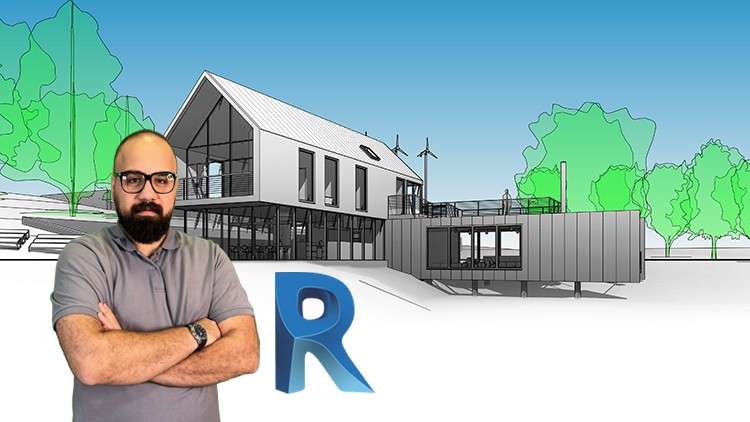
Learning Revit Architecture: 2D Drawing, Creating Forms with Components and Massing. 2020 Revit version
What you will learn
Learning Revit Architecture
Overview of Revit Architecture Interface
Understanding Revit Elements: Walls, Doors, Windows, Roofs and Floors
Drawing Walls and modifying Wall Properties
Adding and modifying Doors, Windows and Wall Openings
Adding wall Sweeps and creating custom profiles
Creating and Editting Sub Elements
Modifying views, placing camera, changing Visual style and working in 3D View
Creating Ramp, Stair, Railing and modifying Stair types
Creating and modifying custom treads , Riser
Working with Room and Area in Revit
Importing CAD and PDF files into Revit
Exporting Revit files to AutoCad
How create forms by Model In-Place in Revit
Extrusion, Blend, Revolve, Sweep, Swept Blend and Void Forms
Topography in Revit.
Creating Topography from CAD files in Revit
Creating forms by Mass in Conceptual Mass template in Revit
Creating Custom Curtain Panel Pattern Based and Generic Model Adaptive
Materials in Revit
Rendering with Revit
Why take this course?
note : This course is the result of comprehensive experiences from practical work in architecture and construction using Revit software.
- Do you know how to easily and quickly learn to work with Revit software in the field of architecture?
- Do you want to model any form you like without limitations using the Mass and Model in place tools in Revit?
- Did you know you can easily convert 2D project plans into 3D models in Revit and have as many sections and elevations as you want, quickly?
In this training course, you will become fully acquainted with Revit software and learn it step by step at the beginner and intermediate levels in the field of architecture, familiarizing yourself with its various components. Our goal with the teachings of this course is to transfer the experiences we have gained over the years and used in real projects. In this training course, you will learn how to draw and create projects using specialized Revit tools, become familiar with various massing environments for creating complex volumes, and also become acquainted with important Component tools that allow you to perform advanced modeling for various purposes.
Headlines:
- Learn Revit Architecture through an overview of the Revit interface, gaining familiarity with its tools and functionalities.
- Learn Revit Architecture by understanding its elements such as walls, doors, windows, roofs, and floors, drawing and modifying walls and their properties, adding and adjusting doors, windows, and wall openings, as well as adding wall sweeps and creating custom profiles.
- Learn to create ramps, stairs, and railings in Revit, and master the art of modifying various stair types. Additionally, explore the creation and modification of custom treads and risers to enhance your designs.
- Learn to import CAD and PDF files into Revit, enabling the creation of 3D models based on the imported plans, and acquire the ability to seamlessly export Revit files to AutoCAD for further utilization and collaboration.
- Learn how to create forms using the Model In-Place feature in Revit, which includes techniques such as extrusion, blend, revolve, sweep, swept blend, and creating void forms. Drawing and modeling several simple examples for better understanding of the form tools in the Model In-Place.
- Learn to create forms using the Mass feature in the Conceptual Mass template in Revit, and explore creating custom curtain panel patterns based on patterns and adaptive generic models.
This is a comprehensive introductory course designed for anyone who intends to learn Revit and aims to gain mastery in architectural discipline.
From now on, you can easily ask me any questions about the tutorials and I’ll help address any issues you encounter.